featured
Federal Court Sides With Safe Drug Consumption Site, Saying Religious Protections Apply
Published
10 hours agoon
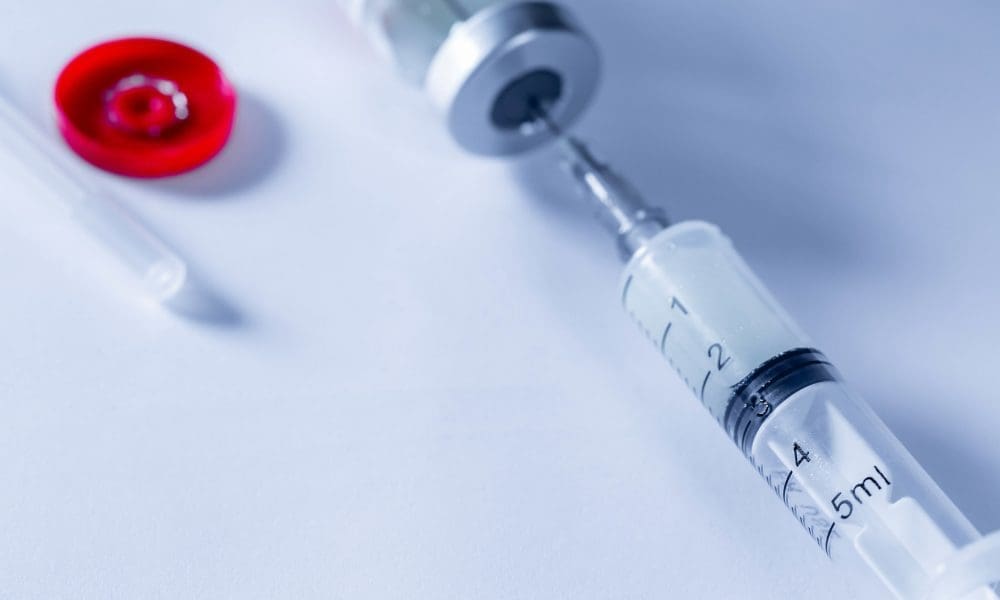
A federal appeals court last week sided with a nonprofit attempting to open a supervised drug consumption facility in Philadelphia, reversing a lower court decision and ruling that religious freedom and free exercise protections are applicable to nearly any group claiming a religious motivation for its actions.
In an opinion from a three-judge panel of the U.S. Court of Appeals for the Third Circuit, the court remanded the case, Safehouse v. Department of Justice, back to district court in the Eastern District of Pennsylvania to determine whether the group “has plausibly pleaded” its case under the Religious Freedom Restoration Act (RFRA) and the First Amendment.
An earlier district court ruling in the case rejected Safehouse’s claim that the group was protected under RFRA, siding with Department of Justice (DOJ) lawyers who’d argued that the group’s views on harm reduction were “socio-political,” not religious. Safehouse appealed that ruling last September.
The new Third Circuit opinion, published on Thursday, says the lower court ruling was a “reversible error.”
“RFRA’s plain text and Free Exercise doctrine are clear that those statutory and constitutional protections extend to non-natural persons, including so-called non-religious entities,” the ruling says, citing past court decisions in favor of the evangelical-owned arts-and-crafts store Hobby Lobby as well as a Colorado baker who refused on religious grounds to make a wedding cake for a same-sex couple.
For those and other reasons, the court said, “we will reverse the District Court’s order that Safehouse is not protected by RFRA and the Free Exercise Clause as a non-religious entity and remand for it to consider whether Safehouse has plausibly pleaded RFRA and Free Exercise counterclaims.”
In a statement sent to supporters, Safehouse leaders said they “are gratified that the Third Circuit acknowledges that Safehouse is entitled to the full protection of the Religious Freedom Restoration Act and the First Amendment.
“Today’s decision is an important milestone not only for Safehouse, but for all community-based organizations that save lives by evidence-based, compassionate harm-reduction strategies,” the group said. “The Court’s opinion recognizes what we have always believed: The law safeguards our mission to preserve human life in an unprecedented overdose crisis.”
The appeals ruling does not itself allow Safehouse to open its supervised consumption facility in Philadelphia, though it allows the group to continue its challenge against the federal government’s assertion that the prospective site would violate federal law.
In August 2023, when the case was still in district court, 35 Christian and Jewish faith leaders from 19 states submitted an amicus brief in which they supported the nonprofit’s establishment of overdose prevention site under RFRA, saying that Safehouse’s board members’ mission to reduce harm aligns with sincerely held religious beliefs.
DOJ had argued, meanwhile, that “maintaining a place where Safehouse would invite drug users to consume illegal drugs would violate 21 U.S.C. § 856(a)(2).”
That law, in relevant part, makes it illegal to “manage or control any place…and knowingly or intentionally…make available for use, with or without compensation, the place for the purpose of unlawfully manufacturing, storing, distributing, or using a controlled substance.”
DOJ has previously argued that the religious exemption does not apply because Safehouse itself is not a bona fide religious organization. But the religious leaders asserted that the group’s board members are nevertheless motivated by a faith-based understanding of their obligation to prevent unnecessary drug overdose deaths.
As to whether RFRA would allow an exemption to Controlled Substances Act (CSA) itself, the federal drug law does say that “any person may apply for an exception to the application of any provision of this chapter,” but DOJ lawyers have argued that the provision allows only “an exception to particular CSA regulations,” not an exemption from the statute itself.
Safehouse first announced plans to open a Philadelphia safe consumption site in 2018, during the first Trump administration. DOJ sued to block the facility, arguing that it would violate federal drug laws. The district court in that matter sided with Safehouse, but the ruling was later overturned by the Third Circuit.
The case continued under the Biden administration, with DOJ officials continuing to push back against the site. The Supreme Court rejected a request to hear a case on the legality of the Safehouse facilities in October 2021.
While the Philadelphia facility was being held up in the litigation, New York City opened the first locally sanctioned harm reduction centers in the U.S. in November 2021, and officials reported positive results saving lives.
A 2022 study published by the American Medical Association (AMA) found that the New York City facilities decreased the risk of overdose, steered people away from using drugs in public and provided other ancillary health services to people who use illicit substances.
Separate research published AMA the following year found that New York City’s first drug overdose prevention centers (OPCs) did not lead to increased crime despite a significant decrease in arrests.
Rhode Island, while Minnesota and Vermont have also authorized overdose prevention centers (OPCs) at the state level.
Earlier this year, however, the Minnesota plans were put on pause, with state officials citing concerns about federal law.
Last October, a group of doctors argued that overdose prevention centers—where people can more safely use illegal drugs in a medically supervised environment and are typically connected to a host of other services—“represent a wise, cost-effective, and necessary use” of state opioid settlement funds.
The centers can “save lives, improve public health and advance racial equity,” said the paper from the advocacy group Doctors for Drug Policy Reform (D4DPR), adding that the sites have been operating in Europe for almost four decades and have existed in North America since 2003.
“These sites have reduced overdose morbidity and mortality, improved injection safety, and increased access to addiction treatment without raising crime rates,” the group said, adding: “For many individuals who use drugs, these centers are often the only places where they are treated with dignity and respect.”
The National Institutes of Health (NIH) put out a pair of requests for applications in December 2021 to investigate how safe consumption sites and other harm reduction policies could help address the drug crisis.
In August 2023, a U.S. congresswoman from New Jersey was among a number of speakers who called for support and expansion of OPCs at a Drug Policy Alliance event held ahead of International Overdose Awareness Day.
Rep. Bonnie Watson Coleman (D-NJ), who in 2021 sponsored a bill to federally decriminalize all drugs, said during Monday’s webinar that OPCs are an “important part” of a “necessary shift” away from punitive drug policies and toward a more health-centered approach.
National Institute on Drug Abuse (NIDA) Director Nora Volkow in 2022 also tacitly endorsed the idea of authorizing safe consumption sites, arguing that evidence has effectively demonstrated that the facilities can prevent overdose deaths.
Volkow declined to say specifically what she believes should happen with the ongoing lawsuit, but she said safe consumption sites that have been the subject of research “have shown that it has saved a significant [percentage of] patients from overdosing.”
Read the full Third Circuit ruling in Safehouse v. DOJ below:
Photo courtesy of Flickr/Marco Verch.

Author: mscannabiz.com
MScannaBIZ for all you Mississippi Cannabis News and Information.
You may like
-


Proposed DOJ Rule Says Marijuana Users Likely Wouldn’t Be Eligible To Have Gun Rights Restored
-
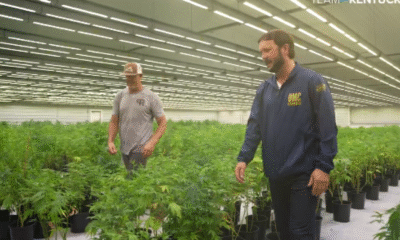

Kentucky medical marijuana cultivator brings in half-grown plants to speed harvest
-
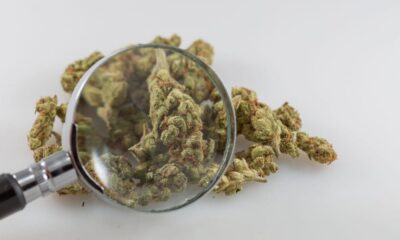

Federal Researchers Claim First-Ever Detection Of Cannabinoids In Human Breath After Use Of Marijuana Edibles
-
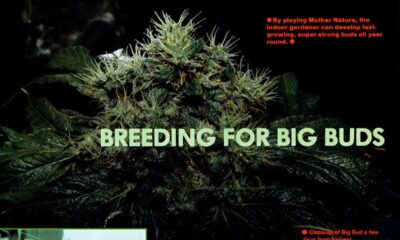

BREEDING FOR BIG BUDS (1986)
-
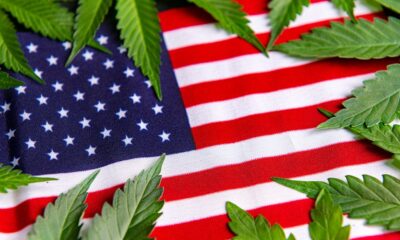

New DEA Admin Sidelines Cannabis Rescheduling Despite Earlier Promises
-


New Rules in New Zealand Place Strict Guidelines on Medical Cannabis ‘Advertising’
featured
Proposed DOJ Rule Says Marijuana Users Likely Wouldn’t Be Eligible To Have Gun Rights Restored
Published
6 minutes agoon
July 29, 2025
The U.S. Department of Justice (DOJ) is accepting public comments on a proposed rule that would provide guidance around the government’s restoration of Second Amendment gun rights for people who’ve been disarmed under federal law. But the department says certain applicants—including users of marijuana—”would be presumptively ineligible for relief and therefore denied relief absent extraordinary circumstances” because they appear to have “a lack of respect for the law and potential dangerousness.”
The DOJ filing, signed by Attorney General Pam Bondi and published last week, lists cannabis consumers and other “unlawful users of controlled substances” as among a number of categories of applicants who would presumably not qualify for relief under the proposed rule.
Under a federal law known as Section 922(g)(3), unlawful drug users—including of state-legal marijuana—are prohibited from purchasing or possessing firearms or ammunition. But in recent months, a flurry of appeals court decisions have questioned the blanket ban’s legality, for example ruling that the restriction is constitutional only in certain circumstances.
DOJ’s filing doubles down on the government’s position in multiple court cases that marijuana users have no Second Amendment rights because the drug inherently makes people dangerous.
“Persons currently subject to the prohibitions in 922…(g)(3) (unlawful users of controlled substances)…would presumptively be denied relief because, having an adjudicated status that indicates a lack of respect for the law and potential dangerousness, they are unlikely to meet the statutory criteria,” it says
At the same time, the proposed rule also says the attorney general, in considering applicants’ requests to have their gun rights restored, “would not be bound by the artificial limits of the categorical approach,” noting that officials’ “decision whether to grant relief will be based on all the relevant circumstances, rather than a blindered approach that looks only at the facts that led to the applicant’s federal firearm disability.”
The rule doesn’t mean that people with past convictions around drug use would necessarily be denied relief, though it does suggest applications from current unlawful drug users would be rejected.
A different portion of the federal statute, 922(g)(1), prohibits gun ownership by anyone “who has been convicted in any court of, a crime punishable by imprisonment for a term exceeding one year.” Someone with a past felony conviction for cannabis possession might be eligible to have their rights restored under the proposed rule, but not if they’re currently prohibited under 922(g)(3) as a current consumer.
Someone with a past drug use conviction who no longer uses drugs, however, might be able to have their rights restored, as the proposed rule states that “such persons can ordinarily take themselves out of the prohibited category by discontinuing their unlawful conduct.”
Notably under the proposed rule, applications for relief would be reported to the “chief law enforcement officer in the locality where the individual lives.” Local law enforcement could also serve as “a conduit for other individuals to submit relevant information about the applicant.”
Public feedback on proposal will be accepted for 90 days, ending on October 20. Comments can be filed through the DOJ posting on the Federal Register.
A number of federal courts in recent months have cast doubt on the legality of § 922(g)(3), finding generally that while the ban on gun ownership among drug users may not be entirely unconstitutional, there’s scant historical precedent for such a broad restriction of Second Amendment rights on an entire a category of people.
Last week, for example, a three-judge panel for the U.S. Court of Appeals for the Eighth Circuit vacated a defendant’s conviction under 922(g)(3) and remanded the case back to a lower court for a possible retrial. That came after a previous Eighth Circuit opinion in February said the prohibition on gun ownership by drug users is justified only in certain circumstances—not always.
Notably, the new Eighth Circuit opinion appears to differ from a recent Third Circuit ruling in that the new decision says that not every application of 922(g)(3) “require[s] an individualized factual determination,” explaining that such determinations wouldn’t be necessary if the government could demonstrate that a particular drug made an entire class of users dangerous.
By contrast, the Third Circuit earlier this month said in a published opinion that district courts must make “individualized judgments” to determine whether 922(g)(3) is constitutional as applied to particular defendants.
The appeals panel ruled that while a person “need not have harmed someone, threatened harm, or otherwise acted dangerously to justify his disarmament,” the history of gun laws in the country requires that “district courts must make individualized judgments and conclude that disarming a drug user is needed to address a risk that he would pose a physical danger to others.”
Judges in that case noted that historical restrictions on gun ownership under “drunkenness and lunacy laws” in the U.S. “were still always based on an ‘individualized assessment’ rather than a categorical judgment.”
As a recent report from the Congressional Research Service explained the current legal landscape, a growing number of federal courts are now “finding constitutional problems in the application of at least some parts” of the firearms prohibition.
The matter could soon be taken up by the U.S. Supreme Court. In a recent petition for review by justices, U.S. Solicitor General D. John Sauer argued that despite recent appeals court decisions calling the constitutionality of the firearms ban into question, the restriction is nevertheless lawful.
“Section 922(g)(3) complies with the Second Amendment,” the government’s filing in that case, U.S. v. Hemani, maintains. “That provision targets a category of persons who pose a clear danger of misusing firearms: habitual users of unlawful drugs.”
The federal statute “bars their possession of firearms only temporarily,” the government petition says, “and leaves it within their power to lift the restriction at any time; anyone who stops habitually using illegal drugs can resume possessing firearms.”
Notably, while the government mentioned “habitual” users of illegal drugs 40 times in its Supreme Court filing, the word does not itself appear in 922(g)(3). The language of the statute prohibits anyone “who is an unlawful user of or addicted to any controlled substance” from purchasing or possessing firearms or ammunition.
While DOJ is asking the high court to take up the Hemani case, at least two other, similar cases are waiting in the wings: U.S. v. Cooper and U.S. v. Baxter both of which also hinge on the constitutionality of 922(g)(3).
In Cooper, an Eighth Circuit U.S. Court of Appeals panel dismissed a three-year prison sentence against a person convicted for possession of a firearm while being an active user of marijuana. Judges in that case ruled that government’s prohibition on gun ownership by drug users is justified only in certain circumstances—not always.
“Nothing in our tradition allows disarmament simply because [the defendant] belongs to a category of people, drug users, that Congress has categorically deemed dangerous,” their ruling said.
The justices are set to discuss the case in a private meeting in September.
In Baxter, the Eighth Circuit ruled 922(g)(3) unconstitutional as applied to the facts in the case.
Judges in that case wrote that there were insufficient factual findings in the record “for this Court to review Baxter’s as-applied Second Amendment challenge.” Nevertheless, the they wrote, “We reverse the district court’s ruling on Baxter’s as-applied Second Amendment challenge and remand to the district court for further proceedings consistent with this opinion.”
In recent weeks, the government has sought further time from the court to decide whether to seek an appeal in the other cases. And when DOJ filed its appeal in Cooper, it further asked the court to slow walk the case, requesting justices “hold the petition for a writ of certiorari pending the disposition of the petition in United States v. Hemani…and should then dispose of this petition as appropriate.”
One reason DOJ could be focused on the high court taking up Hemani in particular is that the defendant is not only a cannabis user but also a user of cocaine who’s sold drugs in the past, perhaps reasoning that he is a less sympathetic face of drug consumers’ gun rights. Defendants in the other cases were merely found in possession of both a firearm and marijuana.
If the Supreme Court takes up Hemani and declares 922(g)(3) constitutional, such a ruling could could mean government wins in the remaining cases.
One risk to the government appealing the lower court rulings are that if the Supreme Court does take the case, justices may in fact rule unfavorably to the government, possibly cementing that § 922(g)(3) is—in at least some cases—unconstitutional.
Earlier this year, a federal judge in Rhode Island ruled that the ban was unconstitutional as applied to two defendants, writing that the government failed to establish that the “sweeping” prohibition against gun ownership by marijuana users was grounded in historical precedent.
The Fifth Circuit’s Daniels ruling—in a three-judge panel ruled that the firearms ban was unconstitutional as applied—came on the heels of a string of other judicial decisions casting doubt on the legality of the ban.
A federal judge in El Paso, for instance, ruled late last year that the government’s ongoing ban on gun ownership by habitual marijuana users is unconstitutional in the case of a defendant who earlier pleaded guilty to the criminal charge. The court allowed the man to withdraw the plea and ordered that the indictment against him be dismissed.
Another panel of judges, on the U.S. Court of Appeals for the Tenth Circuit, heard oral arguments in November in the government’s appeal of a district court ruling that deemed the gun ban unconstitutional.
In a number of the ongoing cases, DOJ has argued that the prohibition on gun ownership by marijuana users is also supported by a recent U.S. Supreme Court decision, U.S. v. Rahimi, that upheld the government’s ability to limit the Second Amendment rights of people with domestic violence restraining orders.
DOJ has made such arguments, for example, in favor of the firearms ban in a case in a case in the U.S. Court of Appeals for the Eleventh Circuit. In that matter, a group of Florida medical cannabis patients contends that their Second Amendment rights are being violated because they cannot lawfully buy firearms so long as they are using cannabis as medicine, despite acting in compliance with state law.
DOJ under President Joe Biden consistently argued that medical marijuana patients who possess firearms “endanger public safety,” “pose a greater risk of suicide” and are more likely to commit crimes “to fund their drug habit.”
It remains unclear how the Trump administration will approach the cases. At a NRA conference in 2023, Trump suggested there might be a link between the use of “genetically engineered” marijuana and mass shootings. He listed a number of controversial and unproven factors that he said at the time he would direct the Food and Drug Administration (FDA) to investigate as possibly causing the ongoing scourge of mass shooting afflicting the country.
“We have to look at whether common psychiatric drugs, as well as genetically engineered cannabis and other narcotics, are causing psychotic breaks” that lead to gun violence, he said.
DOJ has claimed in multiple federal cases over the past several years that the statute banning cannabis consumers from owning or possessing guns is constitutional because it’s consistent with the nation’s history of disarming “dangerous” individuals.
In 2023, for example, the Justice Department told the U.S. Court of Appeals for the Third Circuit that historical precedent “comfortably” supports the restriction. Cannabis consumers with guns pose a unique danger to society, the Biden administration claimed, in part because they’re “unlikely” to store their weapon properly.
Last year, Biden’s son Hunter was convicted by a federal jury of violating statute by buying and possessing a gun while an active user of crack cocaine. Two Republican congressmen challenged the basis of that conviction, with one pointing out that there are “millions of marijuana users” who own guns but should not be prosecuted.
The situation has caused confusion among medical marijuana patients, state lawmakers and advocacy groups, among others. The National Rifle Association’s (NRA) lobbying arm said recently that the court rulings on the cannabis and guns issue have “led to a confusing regulatory landscape” that have impacted Americans’ Second Amendment rights.
“Marijuana use is no longer limited to the domain of indigenous religious customs or youth-oriented counterculture and now includes a wide variety of people who use it for medicinal or recreational reasons,” said the advocacy group, which does not have an official stance on cannabis policy generally. “Many of these individuals are otherwise law-abiding and productive members of their communities and want to exercise their right to keep and bear arms.”
Meanwhile, some states have passed their own laws either further restricting or attempting to preserve gun rights as they relate to marijuana. Recently a Pennsylvania lawmaker introduced a bill meant to remove state barriers to medical marijuana patients carrying firearms.
Colorado activists also attempted to qualify an initiative for November’s ballot that would have protected the Second Amendment rights of marijuana consumers in that state, but the campaign’s signature-gathering drive ultimately fell short.
As 2024 drew to a close, the ATF issued a warning to Kentucky residents that, if they choose to participate in the state’s medical marijuana program that’s set to launch imminently, they will be prohibited from buying or possessing firearms under federal law.
The official said that while people who already own firearms aren’t “expected to” turn them over if they become state-legal cannabis patients, those who “wish to follow federal law and not be in violation of it” must “make the decision to divest themselves of those firearms.”
Since then, bipartisan state lawmakers have introduced legislation that would urge Kentucky’s representatives in Congress to amend federal law to clarify that users of medical marijuana may legally possess firearms, though no action has since been taken on that bill.
Kentucky Gov. Andy Beshear (D) said in January that he supported the legislature’s effort to urge the state’s congressional delegation to call for federal reforms to protect the Second Amendment rights of medical marijuana patients, but the governor added that he’d like to see even more sweeping change on the federal level.
“I think the right way to deal with that is not just to focus on that issue, but to change the schedule of marijuana,” Beshear said at a press conference. “What we need to change is the overall marijuana policy by the federal government.”

Author: mscannabiz.com
MScannaBIZ for all you Mississippi Cannabis News and Information.
featured
Federal Researchers Claim First-Ever Detection Of Cannabinoids In Human Breath After Use Of Marijuana Edibles
Published
1 hour agoon
July 29, 2025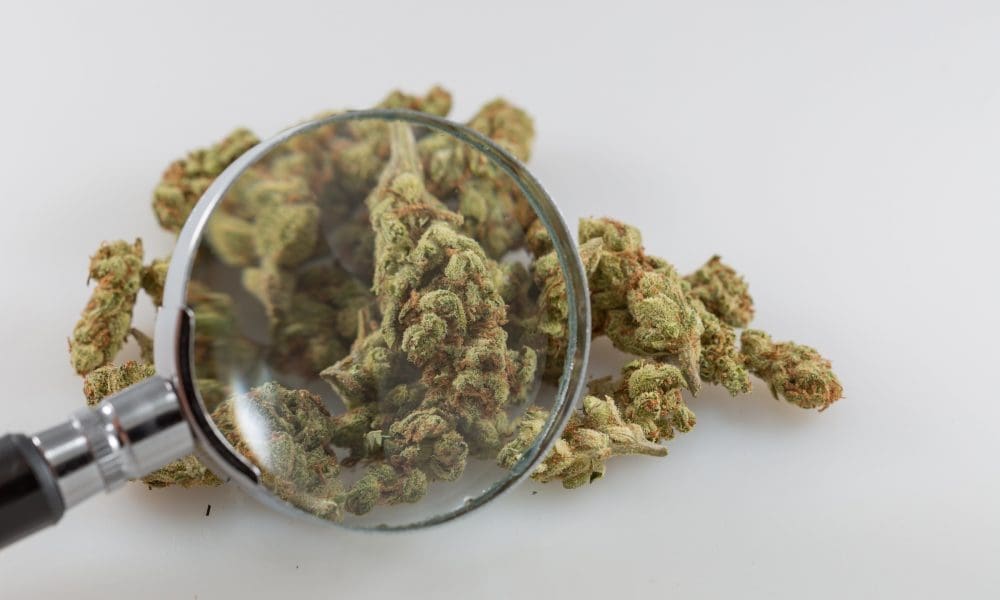
Federal researchers at the National Institute of Standards and Technology (NIST) say they’ve made the first-ever detection of THC in human breath following the consumption of infused edibles—a possible step forward in terms of field testing for cannabis impairment.
But more research is necessary, they add, pointing to “uncertainty of breath measurements” and the need to further analyze the detectability of cannabinoids over longer time periods.
“This is an important step forward, that we can detect THC increases in breath after the ingestion of cannabis,” Jennifer Berry, a NIST research chemist and the lead author on the paper, said in an agency release about the new findings, which were published earlier this month in the Journal of Analytical Toxicology.
Three NIST researchers and one from University of Colorado Anschutz Medical teamed up on the project, which the report describes as a “proof-of-concept study.” It’s part of the federal agency’s broader research into cannabis use and driving performance.
Breath samples of 29 participants were collected before and after ingesting a THC-infused edible, which subjects were asked to bring in themselves. The products ranged in strength from five milligrams to 100 mg THC, though the report notes the amounts were not independently verified.
“NIST and its partners at University of Colorado Anschutz have made the first measurement of tetrahydrocannabinol (THC) in breath from edible cannabis.”
Collection was done using two different devices, one described as an aerosol device and the other as a condensate device. Samples were taken before ingestion and at three timepoints afterward: roughly 47 minutes, 92 minutes and 180 minutes.
Though participants were instructed to abstain from using edible cannabis for 12 hours prior to the study and from inhaling cannabis for 8 hours ahead of time, samples for nearly all participants detected THC even before they ingested the infused edibles.
“THC was detected in breath samples from 27 of the 29 participants before edible ingestion, ranging from trace (10 participants) to greater than 0.4 ng/device,” the report says, noting that similar phenomena around residual THC had been observed in prior studies.
“The finding of detectable and/or quantifiable THC before cannabis use,” authors wrote, “shows how challenging it is to interpret a single THC concentration measurement in breath with no prior information about THC at baseline.”
“The high detection rate of THC in breath after 8 h of requested abstinence,” they added later in the report, “shows that identifying recent use from a single measurement is challenging from any matrix.”
After ingesting the edibles, measured THC levels in the breath of most participants—but not all—rose over time.
“Of the 29 participants in this study, 19 showed a significant increase in THC concentration after edible ingestion (at any of the three post-use timepoints), 4 showed no change, and 6 showed a significant decrease in THC concentration after edible use,” the study says.
Those who showed a decrease in THC levels, it points out, also reported some of the highest THC levels prior to taking the edibles.
Those whose THC breath levels rose or remained stable, however, support the notion that breath-based tests can detect recent cannabis use, authors asserted.
“Breath samples from two-thirds of the participants in this study showed an increase in THC concentration after cannabis ingestion,” they wrote, “but the remaining one-third are not necessarily inconsistent with the hypothesis that recent cannabis use can be detected in breath, regardless of the mode of use.”
Notably, measured levels of THC and some other cannabinoids seem to change in similar ways. But THC and CBD levels didn’t always track with each other.
“When detected, CBN and CBG matched THC trends, but there were multiple instances where CBD and THC disagreed,” the study says, “suggesting differences in biological processing or clearance.”
In the NIST press release, Tara Lovestead, a chemical engineer on the breath research project, said the study “supports the idea that multiple breath measurements over a period of time could be a way to use a breathalyzer to detect cannabis use, regardless of how it’s ingested.”
“However,” the scientist added, “devices will still need standards to ensure that they are accurate and used correctly, standards that don’t yet exist.”
NIST notes in its press release that the agency itself is not developing a cannabis breath-testing device. “Instead, NIST’s role is to help ensure that measurements of cannabis in breath can be accurate, reliable and have scientifically sound standards behind them,” it says.
“Looking forward, we can now tackle the question of when THC increases after edible ingestion, when it goes back to baseline, and how to analyze breathalyzer data to get the information needed.” said Kavita Jeerage, a NIST research chemical engineer who the agency’s cannabis breath research.
The agency is set to host a workshop with device makers in September.
The event was originally scheduled to be held in Boulder, Colorado, in April, but a month ahead of the originally scheduled event, it was abruptly postponed.
According to a preliminary agenda sent to Marijuana Moment by NIST earlier this year, topics to be discussed will include challenges facing marijuana breathalyzer design and development, obstacles to prosecutors handling drugged-driving cases and how NIST and others might partner to advance the technology.
Findings of the workshop, “Building a Path Forward for Meaningful Cannabis Breathalyzer Realization,” are set to be compiled into a NIST internal report that the agency has said will be publicly available.
Unlike with alcohol, there’s currently no widely accepted field test to determine whether someone is under the influence of marijuana.
In 2023, a federally funded report by researchers at NIST and the University of Colorado Boulder concluded that evidence does “not support the idea that detecting THC in breath as a single measurement could reliably indicate recent cannabis use.”
“A lot more research is needed to show that a cannabis breathalyzer can produce useful results,” Jeerage at NIST said at the time. “A breathalyzer test can have a huge impact on a person’s life, so people should have confidence that the results are accurate.”
More recently, a U.S. Department of Justice researcher cast doubt on whether a person’s THC levels are even a reliable indicator of impairment.
States may need to “get away from that idea,” Frances Scott, a physical scientist at the National Institute of Justice (NIJ) Office of Investigative and Forensic Sciences under DOJ, said on a podcast early last year.
Scott questioned the efficacy of setting “per se” THC limits for driving that some states have enacted, making it so a person can be charged with driving while impaired based on the concentration of cannabis components in their system. Ultimately, there may not be a way to assess impairment from THC like we do for alcohol, she said.
One complication is that “if you have chronic users versus infrequent users, they have very different concentrations correlated to different effects,” Scott said. “So the same effect level, if you will, will be correlated with a very different concentration of THC in the blood of a chronic user versus an infrequent user.”
That issue was also examined in a federally funded study last year that identified two different methods of more accurately testing for recent THC use that accounts for the fact that metabolites of the cannabinoid can stay present in a person’s system for weeks or months after consumption.
The THC impairment question has nevertheless been a major focus for lawmakers and the research community, particularly as it concerns driving laws.
Last October, a study preprint posted on The Lancet by an eight-author team representing Canada’s Centre for Addiction and Mental Health, Health Canada and Thomas Jefferson University in Philadelphia identified and assessed a dozen peer-reviewed studies measuring “the strength of the linear relationship between driving outcomes and blood THC” published through September 2023.
“The consensus is that there is no linear relationship of blood THC to driving,” the paper concluded. “This is surprising given that blood THC is used to detect cannabis-impaired driving.”
Most states where cannabis is legal measure THC intoxication by whether or not someone’s blood THC levels are below a certain cutoff. The study’s findings suggest that relying on blood levels alone may not accurately reflect whether someone’s driving is impaired.
“Of the 12 papers included in the present review,” authors wrote, “ten found no correlation between blood THC and any measure of driving, including [standard deviation of lateral position (SDLP)], speed, car following, reaction time, or overall driving performance. The two papers that did find a significant association were from the same study and found significant relationship with blood THC and SDLP, speed and following distance.”
Earlier last year, researchers behind a federally funded study said they’d developed new procedures to enhance the selectivity of a popular forensic testing method, allowing better detection of delta-9 THC and its metabolites in blood.
A 2023 congressional report for a Transportation, Housing and Urban Development, and Related Agencies (THUD) bill said that the House Appropriations Committee “continues to support the development of an objective standard to measure marijuana impairment and a related field sobriety test to ensure highway safety.”
A year earlier Sen. John Hickenlooper (D) of Colorado sent a letter to the Department of Transportation (DOT) seeking an update on that status of a federal report into research barriers that are inhibiting the development of a standardized test for marijuana impairment on the roads. The department was required to complete the report under a large-scale infrastructure bill that President Joe Biden signed, but it missed its reporting deadline.
A study published in 2019 concluded that those who drive at the legal THC limit—which is typically between two to five nanograms of THC per milliliter of blood—were not statistically more likely to be involved in an accident compared to people who haven’t used marijuana.
Separately, the Congressional Research Service in 2019 determined that while “marijuana consumption can affect a person’s response times and motor performance … studies of the impact of marijuana consumption on a driver’s risk of being involved in a crash have produced conflicting results, with some studies finding little or no increased risk of a crash from marijuana usage.”
Another study from 2022 found that smoking CBD-rich marijuana had “no significant impact” on driving ability, despite the fact that all study participants exceeded the per se limit for THC in their blood.
Evan as far back as 2015, a U.S. National Highway Traffic Safety Administration (NHTSA) concluded that it’s “difficult to establish a relationship between a person’s THC blood or plasma concentration and performance impairing effects,” adding that “it is inadvisable to try and predict effects based on blood THC concentrations alone.”
In a separate report last year, NHTSA said there’s “relatively little research” backing the idea that THC concentration in the blood can be used to determine impairment, again calling into question laws in several states that set “per se” limits for cannabinoid metabolites.
“Several states have determined legal per se definitions of cannabis impairment, but relatively little research supports their relationship to crash risk,” that report said. “Unlike the research consensus that establishes a clear correlation between [blood alcohol content] and crash risk, drug concentration in blood does not correlate to driving impairment.”
Earlier this month, meanwhile, a Rutgers University law professor published commentary arguing that roadside tests for marijuana impairment used widely by police departments across the country are “inadequate” and “pseuduscientific,” urging policymakers to take a more evidence-based robust approach to transportation safety while relying less on law enforcement’s ostensible expertise.
The paper, by William J. McNichol of Rutgers University’s Camden School of Law, asserts that current approaches to detecting cannabis impairment “either merely imitate tools used to identify alcohol based impairment without taking into account important differences between the effects of these molecules or they are pseudoscientific ‘police science.’”

Author: mscannabiz.com
MScannaBIZ for all you Mississippi Cannabis News and Information.
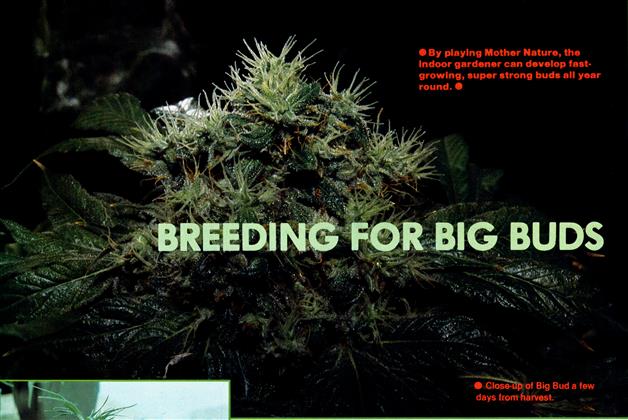
Original publication: November 1986.
BREEDING FOR BIG BUDS
HARVEST ’86
BY JORGE CERVANTES

“Look at the size of that thing, I must be hallucinating,” said Tim as he stared in awe at the huge six-inch diameter flower top. “What did you put in this joint to make me see things twice as big as life? I mean, that is the biggest bud I’ve ever seen!”
“We call her Big Bud. I think she is 100% Indica,” replied James with a big smile. “I brought her back to Detroit from out West. Here, give her a try,” said James, passing Tim a bomber of Big Bud.
Tim put the spliff between his lips and gently drew a few breaths through the unlit joint. “So fresh and minty, it’s the best I’ve ever tasted. I take back all the bad stuff I said about indoor smoke,” Tim said with a pleased sheepish grin.
“They’ve been breeding some incredible plants out on the West Coast. When I was there, indoor growers were talking about the Hash Plant that matures into a 36″ tall two-three ounce plant (dried tops only) after eight weeks of flowering: stout, broad tops laden with thick gooey resin. Or Lime Bud, a Sativa/lndica cross, with long, dainty, lime green leaves and lightweight buds packed with pistils and glistening resin glands. Or Northern Lights, a mainstay variety in Vancouver, B.C. that matures into a four-foot, four ounce plant at the ripe old age of 85 to 90 days. But everyone’s favorite is Big Bud because she grows huge buds and has the sweetest, mintiest taste in the world. My last crop weighed in at 3 1/2 pounds, that’s better than four ounces a plant!”

Narrow leaves show classic qualities.
All of these varieties were developed by industrious, careful and caring individuals that have kept meticulous detailed records of plant growth habits and the offspring that resulted when they crossed a male plant with a female. Indoor breeding is two or three times faster than outdoors. As many as three generations may easily be completed in one year indoors. The breeder controls the hours of light and darkness per day, causing the plants to flower and produce seed at will.
Selective breeding (also known as selective sexual propagation) has completely changed the quality and yield of indoor marijuana crops. The starting point is to collect marijuana seed from well known pot growing regions throughout the globe. The various seed strains are grown and studied thoroughly without any cross breeding. Once each is understood, then selective breeding can begin, either to attain a pure seed stock, or to improve the strain. Once the ultimate plant is developed through this sexual propagation, it can be cloned to preserve the genetic blueprint created by selective breeding.
Cannabis Indica seeds are highly prized for their potency and adaptability to the indoor environment. The characteristics of Indica plants include: squat, bushy, vigorous growth; early, sustained potency; disease resistance; and heavy bud yield. An Indica plant may yield two to four times the dry bud weight of a Sativa at harvest. Thai, Colombian, and Mexican are examples of Cannabis Sativa. These Sativa varieties are tall, lanky, and disease resistant, with narrow, long leaves and light buds that take up to three months to mature. But the high is energetic, soaring, and clear.
Ideally, skilled breeders will strive to retain the desirable dominant growth characteristics of both Cannabis Sativa and Cannabis Indica to form super strains. Breeders may cross a Sativa with an Indica, hoping to retain the desirable soaring high while keeping the short, stocky growth characteristics and early maturity of the Indica.

This single indica female bud is being fertilized by male pollen in the plastic baggie.
Selective breeding requires the breeder to simply assume the role of Mother Nature once again. In nature, pollen from the male cannabis plant is shed into the wind to randomly fertilize any receptive female plant. A breeder adds precision and control to this process by catching pollen from a desirable male and carefully placing it in contact with chosen female pistils.
Two basic kinds of breeding are: (1) inbred or true bred—plants of the same strain or ancestry that are crossed with one another. (2) outbred or hybrid— plants of different strains that are crossed or cross-pollinated.
The goal of inbreeding is to establish a pure breed to start from. Selected females are pollinated with male pollen of the same strain, then the resulting seeds are planted and checked for variability. This process may take several generations to produce a strain that actually breeds true. Pure bred plants are grown until the fifth to sixth generation, after which negative characteristics, like low potency, legginess and lack of vigor tend to dominate.
This true or pure breed is essential to establish common growth characteristics. Without a pure breed on one or both sides, it is difficult to predict the outcome of a hybrid cross. Ideally, both male and female are pure-bred plants, with known ancestry and growth attributes.
A hermaphroditic plant (a plant displaying both male and female flowers) will self-pollinate and produce inbred seeds. Although this is a shortcut to inbreeding, the seedlings resulting from self-pollination may tend to be hermaphroditic themselves. This can be a real headache for the sinsemilla grower or breeder, with unwanted seeds and uncontrolled pollen. Nonetheless, the seed produced by a hermaphrodite that has just a few male flowers on a female plant will be 80-90% female seed. One easy way to produce seeds from an all female clone crop is to stress one of the female branches by twisting a piece of wire around one of the branches a couple of weeks before flowering is induced. The extra stress will usually cause the plant to produce male flowers.
Outbreeding, or producing hybrid seed, has increased agricultural production more than anything. Farmers, breeders and cannabis horticulturists have found that crossing parents of different pure strains, especially those exhibiting exceptional, dominant, complementary characteristics, will result in a super plant, also referred to as hybrid vigor.
It is possible to cross Sativa/lndica. Some growers swear by the cross, saying you get the best of both plants: vigor and size from the Sativa, and squat, bushy, early, potent growth from the Indica.
Choosing from a large and varied plant stock is the key to successful breeding. Since the origin of most seed is dubious, an accomplished breeder waits to see what kind of plant it produces, before deciding which plants to cross to form hybrid seed. If the breeder plants only a few seeds, there is no guarantee that they will grow into ideal breeding stock, even if they came from dynamite smoke. If the breeder instead selects the best plants from many seedlings of various strains of Cannabis Indica (and/or Sativa), he or she will have a better chance of achieving the desired outcome.
BREEDING: STEP-BY-STEP
STEP ONE: Choose male breeding stock exhibiting desirable characteristics.
STEP TWO: One branch full of male flowers is all that will be needed, unless a large crop is desired. Unused branches may be stripped of flowers to help contain pollen and guard against accidental, random pollination. The male can be isolated from the females, once flowers have developed, but not yet opened, by placing him in a sunny window or in a vegetative grow room. This will slow flower development and not hurt the male in any way.
A branch of ripe, male flower may be cut and placed in water. It will remain healthy for several weeks. When the pollen sacks open, proceed with Step Three. The remaining male plant may then be cut back or harvested.
Skilled breeders will cross a Sativa with an Indica, hoping to retain the Sativa’s soaring high while keeping the stocky growth and early maturity of the Indica.
STEP THREE: When the pollen pods start to open, place a clean, plastic sack or baggie over the branch to collect pollen. Secure the bag at the bottom with a piece of string or wire tie. Keep the bag over the branch for several days to collect pollen.
STEP FOUR: When enough pollen has been collected, shake remaining pollen off into the bag. Remove spent branch. Pollen may be kept for several weeks by removing all vegetative matter to prevent mold, and storing the pollen in a dark, dry container in the refrigerator.
STEP FIVE: Ideally, pistils should be ready for fertilization three to four weeks after the first calyx has appeared. Receptive pistils are white and fuzzy, not starting to turn brown. Cover the selected female branch that has many ripe, receptive pistils with the pollen-filled bag. Shake the bag.
STEP SIX: Use a small paint brush to apply the pollen from the bag to the pistils if just a few seeds are desired from many different females. Be very careful. Just use a little pollen on each calyx and keep it from spreading to the sinsemilla crop.
STEP SEVEN: Leave the bag for two or three days, to ensure fertilization. Be careful not to scatter pollen on adjacent sinsemilla crop when removing the bag.
STEP EIGHT: After fertilization, seeds will be ripe in three-six weeks. Harvest seeds when they split open the containing calyx or rattle in the pod.
STEP NINE: Let seeds dry for two to three months, in a cool, dry place, before planting.
This is the eighth in a series of articles by Jorge Cervantes, author of the bestselling INDOOR MARIJUANA HORTICULTURE, known by many as the Bible of indoor growing. The series outlines indoor growing from A-Z, for both novices and experienced gardeners alike.

Author: mscannabiz.com
MScannaBIZ for all you Mississippi Cannabis News and Information.

Proposed DOJ Rule Says Marijuana Users Likely Wouldn’t Be Eligible To Have Gun Rights Restored

Kentucky medical marijuana cultivator brings in half-grown plants to speed harvest

Federal Researchers Claim First-Ever Detection Of Cannabinoids In Human Breath After Use Of Marijuana Edibles

BREEDING FOR BIG BUDS (1986)

New DEA Admin Sidelines Cannabis Rescheduling Despite Earlier Promises

New Rules in New Zealand Place Strict Guidelines on Medical Cannabis ‘Advertising’

South Beloit blood donors get marijuana products for their contribution

Oklahoma Campaign to Legalize Adult-Use Cannabis Will Begin Collecting Signatures Next Month

Bellbrook leaders pass ordinance banning marijuana sales

PackworldUSA Highlights Versatile, Precision-Driven 3400 Series Heat Sealer for Cannabis Applications

Federal Court Sides With Safe Drug Consumption Site, Saying Religious Protections Apply

Trump’s New DEA Administrator Omits Cannabis Rescheduling From Top Priorities

High Times, RAW and hhemp.co Forge New Era of Pre‑Rolls, Vapes & Hemp Products

Bill To Ban Hemp Products With THC Is Filed In Texas House, As Governor Continues To Call For Regulations Instead

Illness linked to cannabis use sending more patients to the hospital, including NC woman

Chicagoland Cookies Dispensary Opens in Illinois

Is the Wait Over for Colombian Patients? Government May Allow Sale of Medical Cannabis Flowers

NORML Remembers Richard Lee – NORML

Bipartisan Coalition of 32 Attorneys General Call for Federal Cannabis Banking Reforms

Trump Backs Pro-Marijuana-Legalization Lawmaker To Lead Republican National Committee

Some Jokes To Bring A Monday Smile

Grön Acquires New York Cannabis License

$2.5M prejudgment filed against men behind false cannabis license scheme: Tong

Adult-Use Cannabis Bill Filed in Texas

Alert: Department of Cannabis Control updates data dashboards with full data for 2023

Connecticut Appoints The US’s First Cannabis Ombudsperson – Yes there is a pun in there and I’m Sure Erin Kirk Is Going To Hear It More Than Once!

5 best CBD creams of 2024 by Leafly

EU initiative begins bid to open access to psychedelic therapies

Free delta-9 gummies from Bay Smokes
New Study Analyzes the Effects of THCV, CBD on Weight Loss

5 best autoflower seed banks of 2024 by Leafly

May 2024 Leafly HighLight: Pink Runtz strain

Mississippi city official pleads guilty to selling fake CBD products

Curaleaf Start Process Of Getting Their Claws Into The UK’s National Health System – With Former MP (Resigned Today 30/5/24) As The Front Man

Discover New York’s dankest cannabis brands [September 2024]

Press Release: CANNRA Calls for Farm Bill to Clarify Existing State Authority to Regulate Hemp Products

Local medical cannabis dispensary reacts to MSDH pulling Rapid Analytics License – WLBT

Horn Lake denies cannabis dispensary request to allow sale of drug paraphernalia and Sunday sales | News

Nevada CCB to Accept Applications for Cannabis Establishments in White Pine County – “Only one cultivation and one production license will be awarded in White Pine County”

5 best THC drinks of 2024 by Leafly

The Daily Hit: October 2, 2024

6 best CBD gummies of 2024 by Leafly

5 best delta-9 THC gummies of 2024 by Leafly

Weekly Update: Monday, May 13, 2024 including, New Guide for Renewals & May Board meeting application deadline

People In This State Googled ‘Medical Marijuana’ The Most, Study Shows

PRESS RELEASE : Justice Department Submits Proposed Regulation to Reschedule Marijuana

Thailand: Pro-cannabis advocates rally ahead of the government’s plan to recriminalize the plant

Press Release: May 9, STIIIZY and Healing Urban Barrios hosted an Expungement Clinic & Second Chance Resource Fair
Trending
-

 California Cannabis Updates1 year ago
California Cannabis Updates1 year agoAlert: Department of Cannabis Control updates data dashboards with full data for 2023
-

 Breaking News1 year ago
Breaking News1 year agoConnecticut Appoints The US’s First Cannabis Ombudsperson – Yes there is a pun in there and I’m Sure Erin Kirk Is Going To Hear It More Than Once!
-
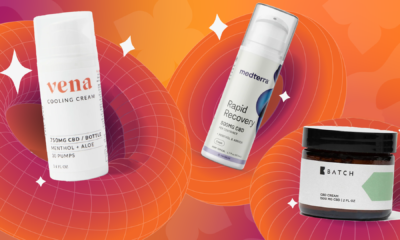
 best list12 months ago
best list12 months ago5 best CBD creams of 2024 by Leafly
-

 Business10 months ago
Business10 months agoEU initiative begins bid to open access to psychedelic therapies
-

 Bay Smokes1 year ago
Bay Smokes1 year agoFree delta-9 gummies from Bay Smokes
-

 cbd1 year ago
cbd1 year agoNew Study Analyzes the Effects of THCV, CBD on Weight Loss
-

 autoflower seeds10 months ago
autoflower seeds10 months ago5 best autoflower seed banks of 2024 by Leafly
-

 California1 year ago
California1 year agoMay 2024 Leafly HighLight: Pink Runtz strain

